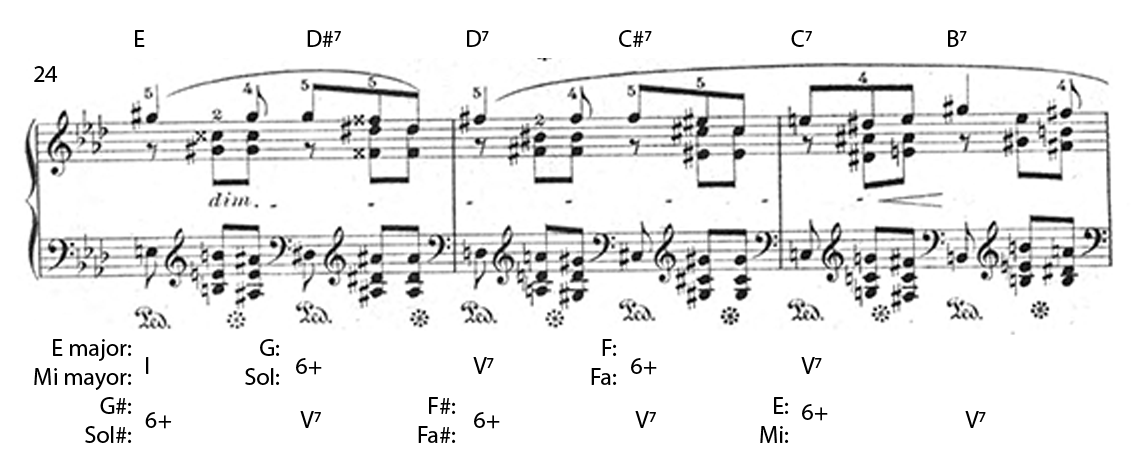Prelude No. 17 in A-flat Major by Frédéric Chopin
José Rodríguez Alvira
 : measures 19 to 34
: measures 19 to 34
The second section starts in measure 19 and is highly chromatic contrasting with section A.
- In measure 19, Chopin changes to the A major key.
- Measures 19 and 20 are repeated in C# minor (measures 21 and 22) and E major (23 and 24).

In measure 24, several parallel dominant seventh chords descend chromatically:

How can we explain this passage?
The easiest way is by using the tritone substitution concept. In jazz theory, a dominant chord substitutes another dominant chord that shares the same tritone. All dominant chords have a tritone between the third and the seventh notes. The two chords that share the tritone are at the distance of a tritone.
In the following image, we show a cycle of fifths progression, starting on E7 and ending in F7. In the second system, we show the same chords but applying tritone substitution to every other chord. Note that we get to the same chords as Chopin:

A more traditional explanation is also possible. The dominant seventh chord is enharmonically equivalent to a German augmented sixth chord. For example, E7 is equivalent to the augmented chord of G# minor key. Each dominant chord is used as an augmented sixth chord of the next and descends chromatically as the standard augmented chord resolution:

Measures 27 to 34
| Measures | |
|---|---|
| 27 | E major key. |
| 28 to 30 | Chopin uses the IV degree chord of E minor (modal interchange). |
| 32 and 33 | G# minor (E major's III degree) is enharmonically transformed in Ab minor. |
| 34 | Ab minor's VII degree leads to Ab major in the next section. |

© 2019 José Rodríguez Alvira. Published by teoria.com